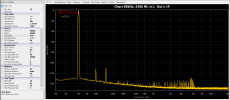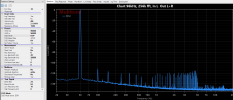Sokel
Master Contributor
- Joined
- Sep 8, 2021
- Messages
- 6,228
- Likes
- 6,357
Did a little comparison and I was wondering if any friend with better gear here has tested this.
Results you're about to see is probably narrowed to the specific DAC but it's interesting to see how it handles things differently.
I will not try to decipher the results other that DSD seems much cleaner but to the cost of elevated noise.It seems like distortion is not hiding in it though,it's only lower.
But I really hope some experienced users try that properly.

1Khz PCM

1Khz DSD256

Multitone 32 PCM

Multitone 32 DSD256

SMPTE 60Hz/7k 4:1 PCM

SMPTE 60Hz/7k 4:1 DSD256
If any friend here wants any other test please let me know.
Results you're about to see is probably narrowed to the specific DAC but it's interesting to see how it handles things differently.
I will not try to decipher the results other that DSD seems much cleaner but to the cost of elevated noise.It seems like distortion is not hiding in it though,it's only lower.
But I really hope some experienced users try that properly.
1Khz PCM
1Khz DSD256
Multitone 32 PCM
Multitone 32 DSD256
SMPTE 60Hz/7k 4:1 PCM
SMPTE 60Hz/7k 4:1 DSD256
If any friend here wants any other test please let me know.


